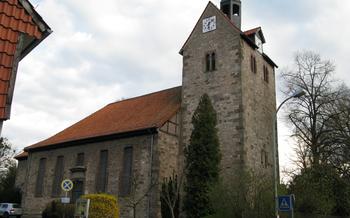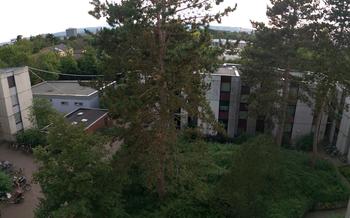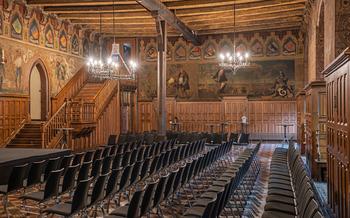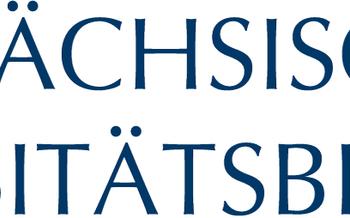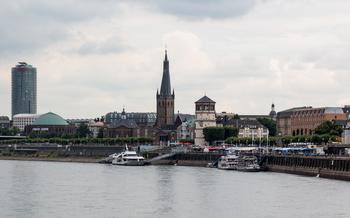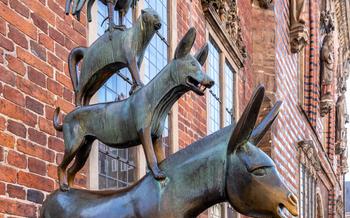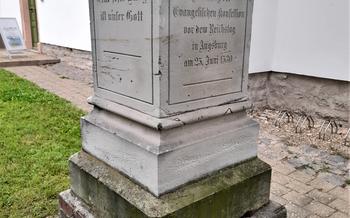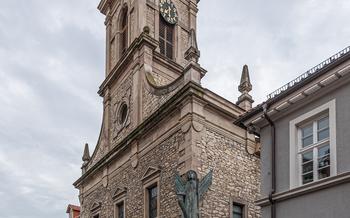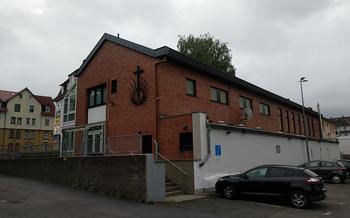
Paulinerkirche
- The Paulinerkirche: A Monument to Remembrance and Reconciliation
- World War II Destruction and Reconstruction
- Home to Renowned Göttingen University
- Impressive Gothic Architecture
- Historical Burials and Commemorations
- Religious Services and Events
- The Paulinerkirche as a Cultural Venue
- Göttingen Seven Trial and Legacy
- Exploring the Church's Surroundings
- Visiting Information and Practical Tips
- Photography and Social Media
- Local Cuisine and Dining Options
- Accommodation and Where to Stay
- Events and Festivals in Göttingen
- Insider Tip: Hidden Gem and Secret Spot
The Paulinerkirche: A Monument to Remembrance and Reconciliation
The Paulinerkirche, with its rich history and symbolic significance, stands as a testament to remembrance and reconciliation in Göttingen. Originally constructed in the 13th century, the church served as a spiritual and academic center for centuries, fostering close ties with the renowned Göttingen University. However, during World War II, the church fell victim to destruction, leaving behind only a haunting ruin. In the decades that followed, the reconstruction of the Paulinerkirche emerged as a symbol of reconciliation and peace, as well as a tribute to the victims of war and tyranny. Today, the restored church stands as a beacon of hope and renewal, embodying the spirit of unity and understanding that has come to define Göttingen.
World War II Destruction and Reconstruction
Amidst the devastation wrought by World War II, the Paulinerkirche, a once-majestic symbol of faith and academia, fell victim to the relentless aerial bombings of 194Reduced to a mere shell of its former glory, with only the outer walls still standing, the church's fate hung in the balance.
In the post-war years, the decision to reconstruct the Paulinerkirche was not without its challenges. The sheer magnitude of the damage, coupled with the limited resources and competing priorities of the time, made the task seem almost insurmountable. However, fueled by a deep sense of historical responsibility and the desire for reconciliation, the people of Göttingen embarked on a remarkable journey to restore their beloved landmark.
The reconstruction process required meticulous attention to detail, as the goal was not merely to rebuild the church but to preserve its original character and architectural integrity. The painstaking effort involved the careful gathering of historical documents, photographs, and fragments of the original structure. Craftsmen and artisans worked tirelessly to replicate the intricate details and grandeur of the medieval masterpiece.
The restored Paulinerkirche stands as a testament to the resilience and determination of the Göttingen community. Its resurrection symbolizes a profound commitment to preserving the city's rich cultural heritage and fostering a spirit of reconciliation and peace. Today, the church serves as a reminder of the destructive forces of war and the transformative power of unity and perseverance.
Home to Renowned Göttingen University
The Paulinerkirche's rich history and architectural splendor are deeply intertwined with the prestigious Göttingen University. The church has served as a sacred space for the university community since its inception, fostering a deep connection between academia and spirituality. Throughout the centuries, countless scholars, professors, and students have graced the pews of the Paulinerkirche, seeking inspiration, knowledge, and solace within its walls.
Over the years, the church has hosted numerous academic events, lectures, and ceremonies, becoming an integral part of the university's intellectual and cultural life. Its hallowed halls have witnessed the exchange of ideas, the pursuit of knowledge, and the celebration of academic achievements. The Paulinerkirche stands as a symbol of the university's commitment to scholarship, fostering a sense of community and intellectual exchange.
The church's restoration and revitalization have further strengthened its ties with Göttingen University. Today, the Paulinerkirche serves as a vibrant venue for academic gatherings, conferences, and exhibitions, attracting scholars and students from around the world. Its impressive architecture and serene atmosphere provide a fitting backdrop for these events, creating a stimulating environment for intellectual discourse and collaboration.
Impressive Gothic Architecture
The Paulinerkirche is celebrated for its awe-inspiring Gothic architectural style. It boasts striking exterior features, including intricately carved buttresses that lend a sense of grandeur and stability to the structure. The church's facade is adorned with stunningly detailed sculptures and reliefs, capturing the essence of Gothic artistry.
Stepping inside the Paulinerkirche, visitors are met with an equally impressive display of Gothic splendor. The church's interior features elegant ribbed vaults, intricate stained glass windows that bathe the space in colorful light, and elaborate carvings adorning the pillars and walls. The harmonious interplay of these elements creates a serene and uplifting atmosphere, inviting contemplation and wonder.
The Paulinerkirche's architectural significance extends beyond its Gothic style. It represents a fusion of various architectural influences, including Romanesque and Renaissance elements. This unique amalgamation reflects the church's rich history and the diverse cultural heritage of Göttingen. The result is a captivating structure that stands as a testament to the enduring legacy of Gothic architecture and its continued relevance in contemporary society.
Historical Burials and Commemorations
The Paulinerkirche serves as the final resting place for several notable figures who have left an enduring mark on history. Among them lies Otto von Bismarck, the "Iron Chancellor" who unified Germany in the 19th century. His grand tomb, adorned with intricate carvings and inscriptions, stands as a testament to his legacy. Another prominent burial site is that of Wilhelm Eduard Weber, a renowned physicist and one of the founders of the University of Göttingen. His contributions to the field of electricity and magnetism are honored through a memorial plaque within the church.
Moreover, the Paulinerkirche is home to numerous monuments and memorials commemorating those who have lost their lives in various conflicts and tragedies. A poignant reminder of the horrors of war, the War Memorial pays tribute to the fallen soldiers of World War I and World War II. The Memorial to the Victims of National Socialism serves as a solemn remembrance of those who suffered during the Nazi regime. These memorials not only honor the departed but also serve as a reminder of the importance of peace and reconciliation.
The historical burials and commemorations within the Paulinerkirche hold immense cultural and historical value, offering visitors a glimpse into the lives and legacies of influential figures while providing a space for reflection and remembrance.
Religious Services and Events
The Paulinerkirche remains an active place of worship and hosts regular church services and religious gatherings. These services are open to the public and offer an opportunity to experience the sacred atmosphere of this historic church. Special events, such as concerts, exhibitions, and lectures, are also frequently held within its walls. These events provide a platform for cultural exchange, dialogue, and the exploration of various themes related to history, faith, and society.
The Paulinerkirche's religious services and events play a significant role in fostering a sense of community among the local residents and visitors. They offer a space for reflection, spiritual growth, and the celebration of religious traditions. The church's unique blend of historical significance, architectural beauty, and vibrant religious life makes it a cherished landmark in Göttingen.
The Paulinerkirche as a Cultural Venue
Beyond its religious significance, the Paulinerkirche serves as a vibrant cultural venue, hosting a diverse range of events and exhibitions that enrich the city's cultural landscape. The church's unique atmosphere and historical charm provide an exceptional setting for artistic expression and dialogue.
Throughout the year, the Paulinerkirche welcomes renowned musicians, artists, and performers who present concerts, recitals, and exhibitions within its sacred walls. These events showcase a variety of genres, from classical music and choral performances to contemporary art installations and photography exhibitions.
The church's collaboration with local artists and organizations fosters a dynamic cultural exchange, creating opportunities for emerging talent to showcase their work and engage with the community. Regular events such as poetry readings, lectures, and film screenings further enhance the Paulinerkirche's role as a platform for cultural discourse and exploration.
By hosting these cultural events, the Paulinerkirche transcends its religious function and becomes a vital hub for artistic expression and community engagement. Visitors are invited to immerse themselves in the church's rich cultural offerings and experience the transformative power of art and dialogue within this historic setting.
Göttingen Seven Trial and Legacy
The Paulinerkirche is inextricably linked to the historical Göttingen Seven Trial of 183The trial involved seven professors from the University of Göttingen who protested against the revocation of the liberal constitution by the new Hanoverian king, Ernst August I. They were put on trial for their actions and were eventually acquitted. The trial was a significant event in German history, as it highlighted the struggle for freedom of speech and academic freedom. The restoration of the Paulinerkirche in the 1980s was partly motivated by the desire to commemorate the Göttingen Seven and their legacy. The church now serves as a reminder of the importance of free speech and academic freedom, and it is a popular venue for events and exhibitions related to these topics.
Exploring the Church's Surroundings
The Paulinerkirche is beautifully integrated into Göttingen's historic city center, offering visitors an enchanting blend of history and modern-day charm. A short stroll from the church, you'll find yourself in the heart of this vibrant university town, with its cobblestone streets, charming cafes, and historic buildings.
Nearby Attractions and Landmarks
Just a few steps away from the Paulinerkirche, you can visit the Gänseliesel, a beloved bronze fountain that has become a symbol of Göttingen. This iconic landmark depicts a young girl with geese and is a popular meeting point for locals and visitors alike.
Another must-see attraction is the Old Town Hall, located directly opposite the church. This magnificent Renaissance building, dating back to the 13th century, houses the city's historical museum, offering a glimpse into Göttingen's rich past.
Integration with the City's Historical Center
The Paulinerkirche stands as a testament to Göttingen's cultural heritage, seamlessly blending with the city's historical center. The surrounding area boasts numerous well-preserved half-timbered houses, each with its unique charm and story to tell.
Opportunities for Walking Tours and Exploration
Göttingen is an ideal city to explore on foot. Embark on a leisurely walking tour, starting from the Paulinerkirche and meandering through the picturesque streets. Discover hidden courtyards, charming boutiques, and historic churches, each adding to the city's unique atmosphere.
Whether you're a history buff, an architecture enthusiast, or simply seeking a charming and walkable city, Göttingen, with its vibrant energy and rich heritage, is sure to captivate your heart.
Visiting Information and Practical Tips
The Paulinerkirche welcomes visitors with open arms and offers guided tours to enhance your experience. These tours provide a comprehensive overview of the church's history, architecture, and significance, ensuring you don't miss any of its captivating stories. Alternatively, you can embark on a self-guided exploration, allowing you to soak in the church's atmosphere at your own pace. Equipped with an audio guide or informative brochures, you can delve into the church's rich history and uncover its hidden secrets.
To ensure a seamless visit, the Paulinerkirche offers accessibility features like wheelchair ramps and elevators, making it welcoming to all. The church also provides restrooms, a cloakroom, and a small gift shop where you can purchase souvenirs to cherish your visit.
Before your visit, check the church's website for updated information on opening hours and admission fees. Guided tours are available at specific times, so it's advisable to plan your visit accordingly. The church also hosts special events, concerts, and exhibitions throughout the year, offering unique opportunities to experience the Paulinerkirche's vibrant cultural offerings.
Photography and Social Media
When visiting the Paulinerkirche, you'll likely want to capture its beauty and atmosphere through photography. While taking photos inside the church is generally permitted, it's essential to respect the sacred nature of the space and observe proper etiquette. Avoid using flash photography, as it can be distracting during religious services or events. Additionally, be mindful of other visitors and ensure that your photography doesn't interfere with their experience.
Sharing your photos and experiences on social media can be a great way to connect with others who appreciate the Paulinerkirche's history and significance. Use relevant hashtags, such as #Paulinerkirche, #Göttingen, and #Germany, to reach a wider audience and inspire others to visit this remarkable landmark. Remember to tag the church's official social media accounts (@Paulinerkirche) and credit the photographer if you're sharing someone else's work.
By following these guidelines, you can respectfully document your visit to the Paulinerkirche while also sharing its beauty and importance with the world.
Local Cuisine and Dining Options
A visit to the Paulinerkirche can be complemented by a delightful culinary experience in Göttingen. The city offers a diverse range of restaurants and cafes, catering to various tastes and preferences. Whether you seek traditional German cuisine or international flavors, you'll find plenty of options within a short walk from the church.
For a taste of local specialties, try the traditional German dishes served at Zum weißen Schwan, a historic restaurant with a cozy ambiance. Their menu features hearty dishes like schnitzel, rouladen, and bratwurst, all prepared using fresh, local ingredients.
If you prefer a more international experience, La Cantina offers a wide selection of Italian and Mediterranean dishes, including homemade pasta, pizzas, and grilled meats. Their outdoor seating area provides a charming setting to enjoy a meal while admiring the view of the Paulinerkirche.
For those with a sweet tooth, Café am Markt is a must-visit. This charming café serves a variety of cakes, pastries, and ice cream, all made with local, seasonal ingredients. Their cozy interior and friendly staff create a welcoming atmosphere for a relaxing break.
No matter your choice, be sure to savor the local cuisine and indulge in the culinary delights that Göttingen has to offer. A meal with a view of the Paulinerkirche is a perfect way to round off your visit to this historic and beautiful city.
Accommodation and Where to Stay
When planning your stay in Göttingen, you'll find a range of accommodation options to suit different budgets and preferences. For a truly immersive experience, consider staying in a hotel or guesthouse located within walking distance of the Paulinerkirche. This way, you can easily explore the city center and its attractions, including the church, at your leisure.
One highly recommended option is the Hotel am Rathaus, situated just a few steps from the Paulinerkirche. This charming hotel offers comfortable rooms with modern amenities, ensuring a pleasant stay in the heart of Göttingen. The hotel's central location also provides easy access to other landmarks, shops, and restaurants in the city.
Another popular choice is the GHOTEL hotel & living Göttingen, located a short walk from the Paulinerkirche. This modern hotel offers stylish and spacious rooms, perfect for those seeking a comfortable and contemporary stay. The hotel also features a fitness center and a sauna, allowing guests to relax and unwind after a day of exploring the city.
Whether you prefer a traditional hotel experience or a more budget-friendly option, Göttingen has plenty of accommodation choices to meet your needs. Be sure to book your stay in advance, especially during peak tourist season, to secure the best rates and availability.
Events and Festivals in Göttingen
Göttingen, the vibrant university town, comes alive with a diverse range of events and festivals throughout the year. These celebrations offer visitors and locals alike a chance to immerse themselves in the city's rich culture and traditions.
One of the most popular events is the Göttingen International Handel Festival, held annually in May or June. This prestigious festival features renowned musicians from around the world performing the works of George Frideric Handel, a composer who spent his formative years in Göttingen. The festival's concerts, held in various venues across the city, including the Paulinerkirche, attract music lovers from all over.
Another highlight is the Göttingen Literature Festival, held in October. This festival brings together renowned authors, poets, and literary figures from Germany and beyond for readings, discussions, and workshops. The festival's events take place in various locations, including the Paulinerkirche, providing a unique setting for literary encounters.
In addition to these major events, Göttingen hosts a variety of smaller festivals and events throughout the year. These include the Göttingen Jazz Festival, the Göttingen Baroque Festival, and the Göttingen Christmas Market. These events offer a diverse range of cultural experiences, from jazz concerts and baroque music performances to traditional Christmas festivities.
Whether you're a music enthusiast, a literature lover, or simply looking to experience the vibrant atmosphere of Göttingen, be sure to check out the city's events and festivals. Plan your visit around these special occasions to make your trip to Göttingen even more memorable.
Insider Tip: Hidden Gem and Secret Spot
Beyond its awe-inspiring architecture and historical significance, the Paulinerkirche holds a hidden gem that adds to its allure. In the church's crypt, visitors can uncover a set of ancient frescoes that date back to the 14th century. These remarkably preserved murals depict scenes from the Bible and offer a glimpse into the artistic and religious traditions of medieval Germany. While the crypt is not always open to the public, guided tours occasionally provide access to this hidden treasure, allowing visitors to delve deeper into the church's rich history and artistic heritage.
